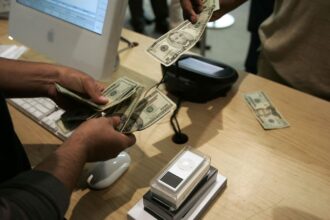Barring significant dealmaking by the September 30 deadline, portions of the U.S. government will be shut down on October 1. While this shutdown could cause numerous disruptions, as detailed in this piece, it doesn’t rise to the level of a possible debt default by the United States, as seen during debt ceiling standoffs. While a government shutdown may still be averted via kicking the can down the road with a short-term continuing resolution or a bipartisan solution, the combination of time growing short and the political climate is conspiring to make a shutdown the most likely outcome.
The good news is that government shutdowns have typically been reasonably short, with an average of 8 days and a median of 4. The most recent lengthy shutdown in 2019 is slightly misleading because only 25% of the government was closed during this period. Pundits have argued that the current situation looks more like 2013 when the disagreement was about funding Obamacare. This year’s conflict seems to revolve primarily around border security and Ukraine funding.
As noted previously, interest on Treasuries is not impacted. In addition, Social Security payments will be made with no interruption. National security personnel and essential Federal employees must work but will not be paid. The White House determines which jobs are “essential,” and all non-essential government employees would be furloughed without pay.
In addition to possibly straining the household finances of government employees, some economic data collection would be suspended. A shutdown means the employment report, inflation readings like CPI, and GDP measurement could be impacted. The length of shutdown would determine if some of these reports are just delayed or skipped entirely. Since it is a private company, the ADP employment report is not impacted. In addition, economic releases from the Federal Reserve and the Department of Labor’s weekly unemployment claims would be produced without interruption. This financial data could prove crucial as the Federal Reserve wrestles with monetary policy with elevated inflation while trying to avoid recession.
While some political rhetoric has stated that a shutdown risks sending the country into an economic downturn, history does not support that conclusion. In the only two quarters with a decline in GDP accompanying a shutdown, the U.S. economy had already entered into a recession in the previous quarter. JPMorgan estimates that each week of government shutdown reduces GDP growth by 0.1 percentage point. Because federal employees receive retroactive salaries after the shutdown ends, any GDP growth lost is typically recouped.
According to Strategas, stocks have not been significantly impacted by government shutdowns in the past. In fact, it has been pretty much an even split between gains and losses for the S&P 500 during these periods, and the most significant move was a strong stock rally during 2019, the most protracted shutdown in our data set.
Despite the high likelihood of a government shutdown on October 1, the impact on the financial markets should be minimal. Because of the interruption of some government services and pay to government employees, shutdowns tend to be mercifully short. A government shutdown changes the timing of a relatively small amount of economic activity, so it doesn’t appreciably raise the risk of economic recession. The overall stock market is not likely to be impacted by a shutdown, while companies with considerable exposure to government spending could see a negative impact.
Read the full article here










